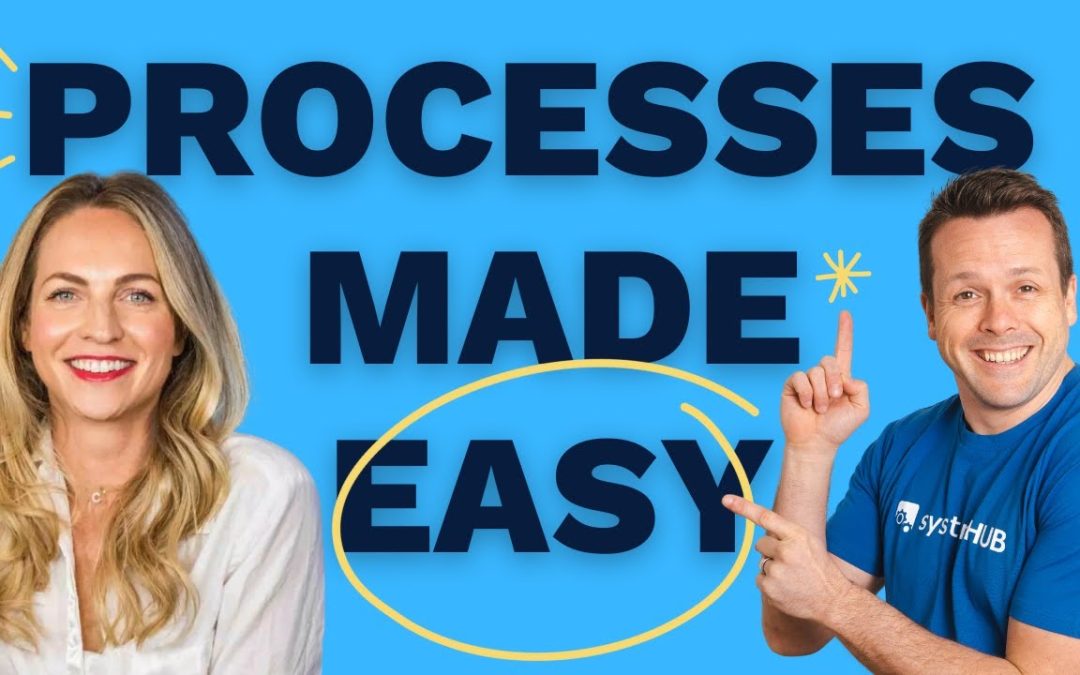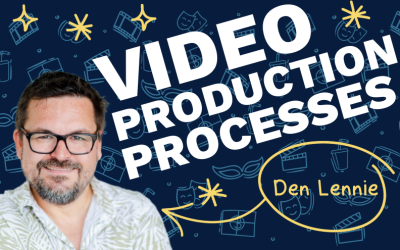What does a business look like after 4 years of systems and processes evolution?
In this video, CEO of Successwise – Claire Marshall, walks David Jenyns through how she systemised and refined the business using SYSTEMology.
You will discover:
➡️ The 80/20 of business processes; 20% of process drive 80% of the results
➡️ Identifying and removing areas of key person dependency in your business.
➡️ The 3 concepts that make systemising easy
➡️ How to identify your Systems Champion
➡️ Using project management software to assign tasks to your team.
➡️ Identifying your first systems with the Critical Client Flow (CCF)
➡️ How to gamify systems for your team
This is a must watch video for you to get a glimpse on how your business can run without you.
Timestamps:
00:42 – What is a business system?
1:42 – The 80/20 rule of systems
1:59 – The key to systemising your business
3:01 – Understanding the health of your business as a whole
3:54 – How to identify you minimum viable systems
5:39 – Starting with simple systems
6:48 – How to evolve your systems over time
7:33 – Identifying your Systems Champion
9:02 – How to integrate PM software and systems software into your business
13:20 – Grab your FREE systems building template
13:51 – Identify your first systems with the Critical Client Flow tool
16:53 – A look at Successwise with CEO, Claire Marshall
21:13 – Deciding on business systems software
21:40 – Key takeaways
23:08 – Building systems as a solopreneur
25:56 – Growing and scaling with business systems
Transcription:
I think of systems as a series of steps that when you follow those steps, they produce a consistent outcome. Now, how you document those steps might be a video or a checklist, or a step-by-step process. It is really just a series of steps that you can get other team members to follow to produce a consistent outcome. If you think of your business as one big system, the goal is to have your business as a system and a series of systems working independently from you.
So you set out the business. And if we drill into this big system that is your business, there are different components to it. There’s sales, marketing, operations, which is the delivery of your product or service. Then you’ve got HR, finance management.
Now, there’s some common departments, but you might have some other names. The goal here is to identify the 20% of the systems that really deliver the 80% of the result for the business. And if we can identify that under each department, there’s probably a handful of systems that drive the results.
Now, the key here is the game, and that’s what we want to turn this into is how do we identify what those systems are, then how do we create an easy way to extract and systemize what’s already happening? So that way we can get everybody operating at that level, bring everybody up to that standard, and start to remove what we call key person dependency.
So the aim of the game is to understand you’ve got the collection of these systems, and whether or not you’re conscious of them, they exist. If you’ve got a team member who’s issuing invoices, they might not have documented their process on how invoices are issued, but they have a way that they do it. They’re probably doing it consistently the same way every single time.
By capturing that, whether it’s as a video or a checklist or a process, we can start to make it possible for other team members to come in behind them. And really take over. So that’s the first concept and when you understand the health of your whole business so when we think about this as your business, it’s dependent on these subsystems, these departments and the systems that sit underneath those. If you have an unhealthy sales department, it’s going to drag the health of the whole business down. So you really need to make sure that you have all of the departments firing.
Now, some people might be particularly strong in one area, but they might be getting way down in another area. So maybe you’re great at marketing because you’re part of the one page marketing plan community and you have that dialled in but maybe your operations department is dragging you down.
You don’t have the systems in place, which means you can’t scale the delivery of your product or service that’s going to harm the overall health. So you really want to think about your business holistically with that idea we’re going to actually translate that into a bit of a game and this is what I want you to think about.
You could build this out as a spreadsheet if you like, but you think in terms of the departments that we talked about and again, you might have some different names and then what I’ve done down the side here is I’ve added some different periods here.
When we lay it out like this, you can go through each department and think about the tasks and build a map of what systems you need to really drive your business.
Again, applying the 80/20, understanding that if we just identify the key ones that deliver the bulk of the result for the department, then this becomes a game and you can start to colour code it. And things that are orange might be systems that you haven’t yet got in place and as you start to document it, you can turn things green, and some things you might identify and you go we’ve got nothing in place.
And once you’ve got the game, it makes it much easier for your team to be able to play this game.









